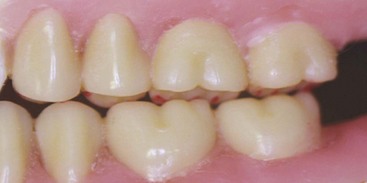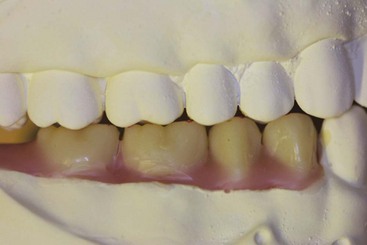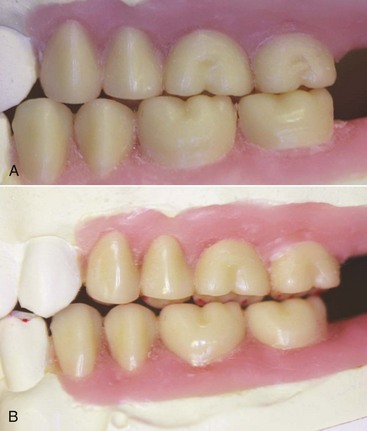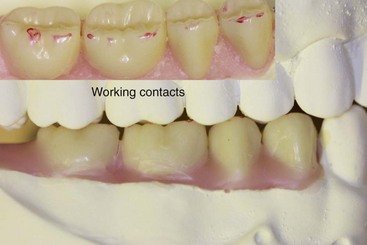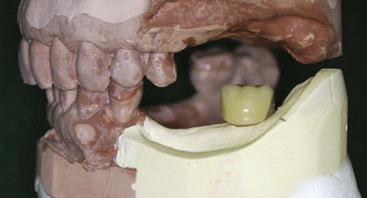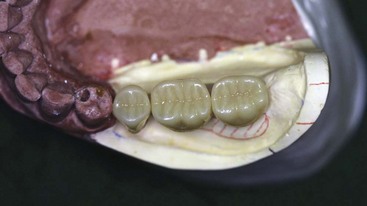CHAPTER 17 Occlusal Relationships for Removable Partial Dentures
The fourth phase* in the treatment of patients with removable partial dentures is the establishment of a functional and harmonious occlusion. Occlusal harmony between a removable partial denture and the remaining natural teeth is a major factor in the preservation of the health of their surrounding structures. In the treatment of patients with complete dentures, the inclination of the condyle path is the only factor not within the control of the dentist. All other factors may be altered to obtain occlusal balance and harmony in eccentric positions to conform to a particular concept and philosophy of occlusion.
Desirable Occlusal Contact Relationships for Removable Partial Dentures
A harmonious relationship of opposing occlusal and incisal surfaces alone is not adequate to ensure stability of distal extension removable partial dentures. In addition, the relationship of the teeth to the residual ridges must be considered. Bilateral eccentric contact of the mandibular distal extension removable partial denture need not be formulated to stabilize the denture. The buccal cusps, however, must be favorably placed to direct stress toward the buccal shelf, which is the primary support area in the mandibular arch. In such positions, the denture is not subjected to excessive tilting forces (Figure 17-6). On the other hand, the artificial teeth of the bilateral, distal extension, maxillary removable partial denture often must be placed lateral to the crest of the residual ridge (Figure 17-7). Such an unfavorable position can cause tipping of the denture, which is restrained only by direct retainer action on the balancing side. To enhance the stability of the denture, it seems logical to provide simultaneous working and balancing contacts in these situations if possible.
Methods for Establishing Occlusal Relationships
Five methods of establishing interocclusal relations for removable partial dentures will be briefly described. Before any of these is described, it is necessary that the use of a facebow mounting of the maxillary cast and pertinent factors in removable partial denture occlusion be considered. The technique for applying the facebow has been described briefly in Chapter 12.
Although a hinge axis mounting may be desirable for complete oral rehabilitation procedures, any of the common types of facebow will facilitate mounting of the maxillary cast in relation to the condylar axis in the articulating instrument with reasonable accuracy and are acceptable for a removable partial denture. As was suggested in Chapter 12, it is still better that the plane of occlusion be related to the axis-orbital plane. Because the dominant factor in removable partial denture occlusion is the remaining natural teeth and their proprioceptive influence on occlusion, a comparable radius at the oriented plane of occlusion in an acceptable instrument will allow reasonably valid mandibular movements to be reproduced.
Stay updated, free dental videos. Join our Telegram channel

VIDEdental - Online dental courses


